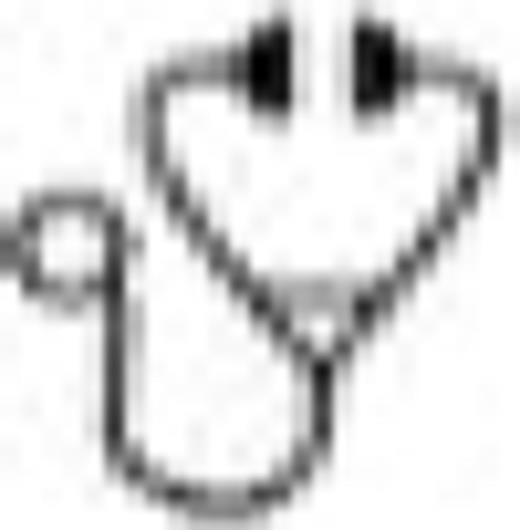Abstract

Background: The underlying etiology of anemia is unclear in a large proportion of elderly patients. The term "anemia of unknown etiology" (AUE) applies when investigations do not suggest a specific cause. It has been suggested that erythropoietin (EPO) may be relatively decreased in patients with AUE but previous studies have been limited by methodological considerations. To address this question we investigated the EPO response in elderly patients with AUE in comparison to other etiologies in a large cohort.
Patients and methods: We conducted a retrospective cohort study including all consecutive hematology patients referred to our center and who had EPO levels determined between 2005 and 2013. We included patients 60 years or older who met the World Health Organization criteria for anemia (<130 g/L in men, <120 g/L in women) excluding patients with insufficient electronic medical records. Three reviewers independently adjudicated each patient's anemia to one of ten diagnostic groups (chronic kidney disease [CKD], iron deficiency anemia [IDA], anemia of chronic disease [ACD], myelodysplastic syndrome [MDS], AUE, suspected MDS, vitamin B12 deficiency, folate deficiency, other etiology, or multifactorial) using predetermined criteria. The etiology reported by at least two of the three reviewers was used in the analysis, with differences resolved by consensus. Inter-observer agreement was assessed using Kappa and Fleiss' Kappa statistics. Patients with IDA served as the reference group. EPO levels were compared between groups using unpaired t-tests. To adjust for potential confounders we constructed stepwise linear regression models in order to estimate the effect of each etiology on EPO level compared to the reference group. Models were adjusted for hemoglobin level, glomerular filtration rate (eGFR) and comorbidity using the Charlson Comorbidity Index. EPO concentration was log transformed to maintain the assumption of homoscedasticity. Regression coefficients were back-transformed using the exponential function and thus they represent the ratio of EPO for each given etiology relative to the reference group.
Results: Of 1511 potentially eligible patients, 570 met our inclusion criteria. Diagnostic groups with 20 or less patients were excluded and thus 531 patients were included in the final analysis. The mean age was 75.7 years and 60% were male.The mean Charlson Comorbidity Index was 1.5. Inter-observer agreement for diagnostic categories was adequate. Compared to IDA, EPO was significantly lower in CKD, ACD and AUE, and higher in MDS and other etiologies. The results remained significant for CKD, ACD and AUE after adjusting for hemoglobin and eGFR, but not for MDS and other etiologies (Table). The effect of comorbidity on the models was negligible in all analyses and thus this data is not shown.
Conclusion: Our results suggest that the EPO response is inadequate in elderly patients with AUE even after accounting for hemoglobin and renal function. This suggests that decreased EPO production or a blunted EPO response to anemia may play a role in the pathogenesis of AUE and that this may indeed constitute a distinct entity. Further studies exploring the potential mechanisms and clinical interventions are warranted.
Mean Erythropoietin Levels and Regression Analysis
| Diagnostic group . | N . | Erythropoietin (IU/L) . | Linear regression models . | |||
|---|---|---|---|---|---|---|
| Unadjusted . | Adjusted for Hb . | Adjusted for Hb and eGFR . | ||||
| Mean . | P-valuea . | Coefficient (95% CI) . | Coefficient (95% CI) . | Coefficient (95% CI) . | ||
| Iron deficiency | 59 | 102.4 | - | Ref. | Ref. | Ref. |
| Chronic kidney disease | 33 | 31.2 | 0.001 | 0.29 (0.18 - 0.48) b | 0.29 (0.19 - 0.46) b | 0.47 (0.27 - 0.81) b |
| Chronic disease | 31 | 26.8 | < 0.001 | 0.42 (0.27 - 0.66) b | 0.49 (0.33 - 0.72) b | 0.55 (0.38 -0.79) b |
| Myelodysplastic syndrome | 180 | 287.8 | 0.002 | 1.68 (1.11 - 2.56) b | 1.32 (0.93 - 1.87) | 1.34 (0.95 - 1.87) |
| Anemia of unknown etiology | 110 | 38.2 | 0.003 | 0.43 (0.32 - 0.59) b | 0.62 (0.46 - 0.83) b | 0.73 (0.55 - 0.97) b |
| Other etiologies | 118 | 271.4 | 0.002 | 1.36 (0.86 - 2.15) | 1.10 (0.75 - 1.60) | 1.11 (0.77 - 1.58) |
| Diagnostic group . | N . | Erythropoietin (IU/L) . | Linear regression models . | |||
|---|---|---|---|---|---|---|
| Unadjusted . | Adjusted for Hb . | Adjusted for Hb and eGFR . | ||||
| Mean . | P-valuea . | Coefficient (95% CI) . | Coefficient (95% CI) . | Coefficient (95% CI) . | ||
| Iron deficiency | 59 | 102.4 | - | Ref. | Ref. | Ref. |
| Chronic kidney disease | 33 | 31.2 | 0.001 | 0.29 (0.18 - 0.48) b | 0.29 (0.19 - 0.46) b | 0.47 (0.27 - 0.81) b |
| Chronic disease | 31 | 26.8 | < 0.001 | 0.42 (0.27 - 0.66) b | 0.49 (0.33 - 0.72) b | 0.55 (0.38 -0.79) b |
| Myelodysplastic syndrome | 180 | 287.8 | 0.002 | 1.68 (1.11 - 2.56) b | 1.32 (0.93 - 1.87) | 1.34 (0.95 - 1.87) |
| Anemia of unknown etiology | 110 | 38.2 | 0.003 | 0.43 (0.32 - 0.59) b | 0.62 (0.46 - 0.83) b | 0.73 (0.55 - 0.97) b |
| Other etiologies | 118 | 271.4 | 0.002 | 1.36 (0.86 - 2.15) | 1.10 (0.75 - 1.60) | 1.11 (0.77 - 1.58) |
a For the comparison with iron deficiency using a Student's t-test
b P < 0.05
Lazo-Langner:Bayer: Honoraria; Pfizer: Honoraria.
Author notes
Asterisk with author names denotes non-ASH members.

This icon denotes a clinically relevant abstract

This feature is available to Subscribers Only
Sign In or Create an Account Close Modal